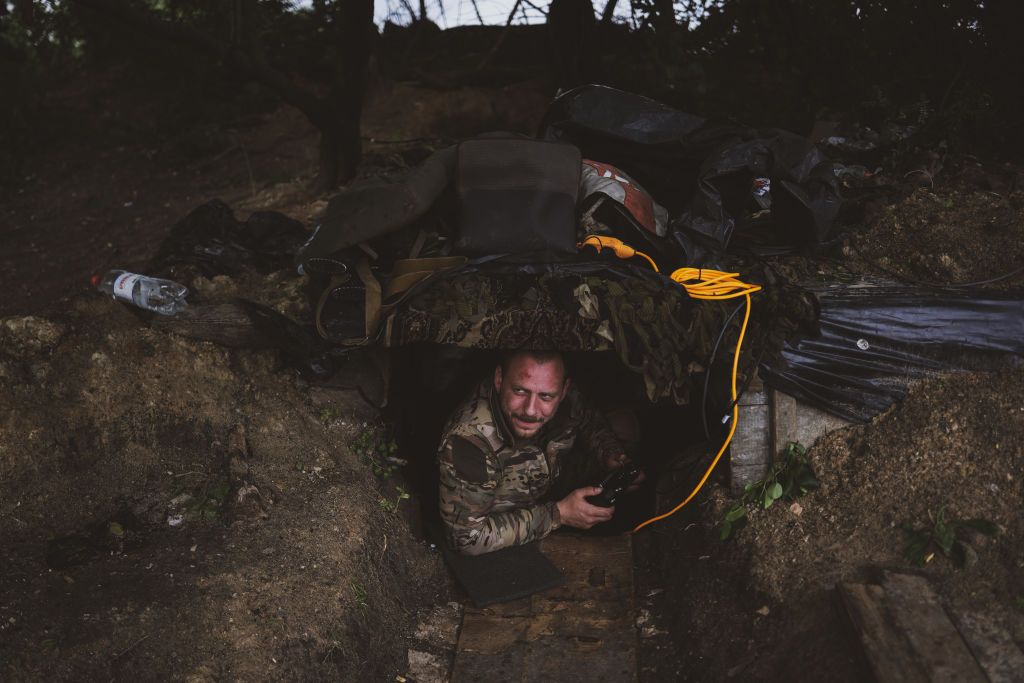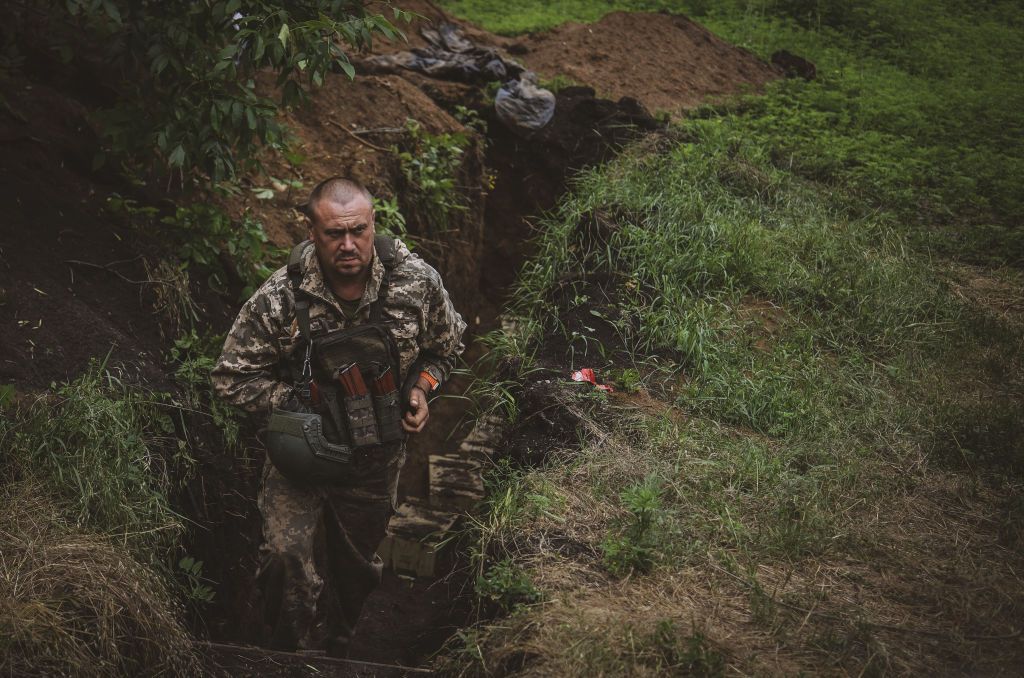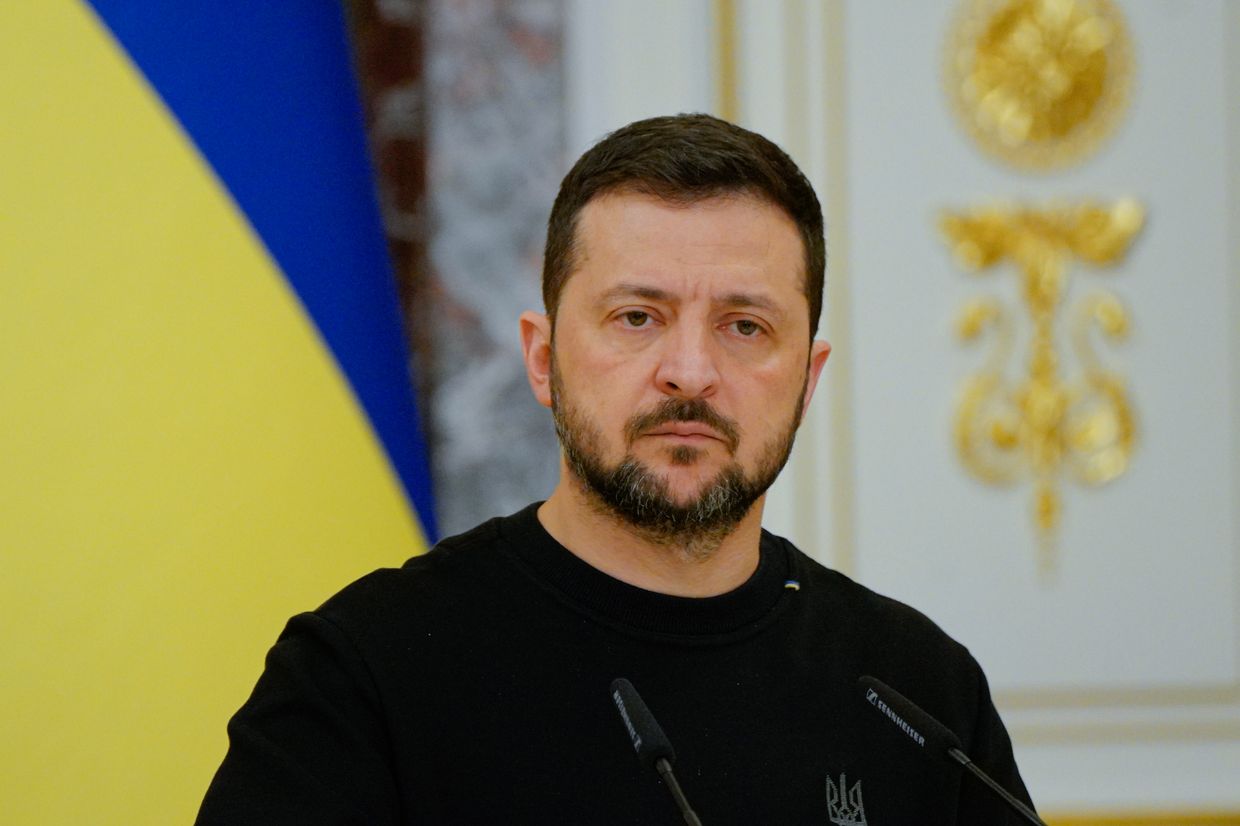This June was meant to be all about the great Ukrainian counteroffensive.
After months of waiting, dozens of public statements from exasperated Ukrainian officials bound to silence, and even more analyses from experts and commentators in the media, the moment finally came when Ukrainian soldiers on their Leopards and Bradleys were to pierce through Russian lines and raise the state flag in liberated Melitopol.
A month in, that hasn’t happened. The first week of the counteroffensive saw a flurry of villages taken on the southern front line, but Ukrainian forces there still remain around 10 kilometers from Russia’s prepared, fortified lines of defense.
As the world’s attention was diverted by the destruction of the Kakhovka dam and the absurd Wagner mutiny in Russia, Ukrainian officials report of regular incremental advances, especially around Bakhmut.
These, however, are limited assault operations, taking trenches one by one, advancing kilometer by kilometer, posing tricky questions for Russia’s defense of the front line but not approaching any kind of strategic breakthrough.
With so much anticipation built up around the counteroffensive, its first month was inevitably met by early interpretations of the results, and almost everyone felt the need to chime in.

Russia, of course, declared the counteroffensive a failure in its first weeks, showing the destroyed Leopard tanks and Bradley infantry fighting vehicles from a failed company-level Ukrainian attack near Orikhiv from as many angles as possible.
Washington has been reluctant to make strong public comments on the early results of the counteroffensive, but, speaking anonymously, officials seem disappointed.
The operation is “not meeting expectations on any front,” one unnamed U.S. official told CNN, without mentioning exactly what expectations they had from an offensive that was always going to come with so many unknowns.
Meanwhile, Kyiv, which arguably hasn’t done itself any favors with its own fostering of hype around the counteroffensive, has also sent mixed messages.
"Some people believe this is a Hollywood movie and expect results now. It's not," Zelensky said on June 21. The next day, the president said almost the opposite; that the rapid advances of last autumn would inevitably be repeated this time around.
For now, without knowing detailed figures on attrition or ammunition expenditure, there is only one conclusion that can be made with any surety: Ukraine’s counteroffensive has found limited success, but until the bulk of its reserve force is committed, it is simply too early to judge.
More so, war is brutal and unpredictable, and rarely goes one side’s way all or even most of the time. Looking at how things have gone so far, the Ukrainian command could still decide that committing to an all-or-nothing attack is just too risky and, even if it does commit, it’s entirely possible that it could fail.

For those rightly invested in this war and in the fate of an independent Ukraine, managing expectations and staying in touch with reality is paramount.
The early phase of Russia’s war against Ukraine was defined by Russian incompetence on the battlefield, as huge columns of armored vehicles got stuck and were ambushed by anti-tank squads and artillery en masse.
But even more, it was Moscow’s public disconnect from the reality on the ground that was most compelling to watch.
Russian troops weren’t met with flowers in the Ukrainian cities they occupied. Russia’s retreat from Kyiv and northern Ukraine in early April of 2022, described by the Kremlin as a so-called “gesture of goodwill,” was a disastrous defeat that set the stage for more Ukrainian victories later.
Ukraine’s air force, which Russia’s Defense Ministry falsely claimed was eliminated in the first days of the full-scale invasion, is still at work in the skies over the front line 16 months later. The HIMARS multiple launch rocket system, of which Russia has apparently destroyed more than was ever given to Ukraine in the first place, is still knocking out high-value targets every day.
Pro-Russian bloggers in Russia and the West alike were rightfully mocked for their “copium,” making absurdly positive assessments as Ukraine took back swathes of territory in its autumn counteroffensives.

The circus of Russian delusion, summed up by the often-repeated line of a Ukrainian soldier “We are so lucky that they are so f***ing stupid,” is all good fun for supporters of Ukraine observing the war.
But now, with Ukraine embarking on one of the most objectively difficult military operations in modern history, going against lines of fortified, mined, and well-manned lines of defense without air superiority, one must avoid falling into the same trap.
Examples of this can be seen not only in the Twitter chatter of Ukraine’s supporters abroad, but also at home, where the divide in perceptions of the war between civilians and military is slowly widening.
“When will we see the Offensive Guard in action? What happened to the 47th Brigade?” asked a follower on a Ukrainian soldier’s Instagram Q&A on June 30, referring to the unit involved in the failed attack with Leopards and Bradleys near Orikhiv.
“Civilians need to shut up about the 47th Brigade and the counteroffensive in general,” the soldier replied publicly. “Can you do better? Do you know better? Then come and do it.”
In its slow and careful approach to the counteroffensive, the Ukrainian command is a fine example of making sober, reality-based decisions.
That, of course, is no surprise. There is nobody for whom the stakes of the counteroffensive are higher than for the Ukrainian military, burdened with the hopes and expectations of a nation and the free world, and with the lives of thousands of its own people on the line.

“Ukraine’s top general, Valery Zaluzhny, wants shells, planes and patience,” reads the headline of a rare interview given by the Ukrainian Armed Forces’ commander-in-chief in June to the Washington Post.
“It's not a show the whole world is watching and betting on or anything,” Zaluzhnyi said in the interview. “Every day, every meter is given by blood.”
Going forward, there are three key paradoxes looming over the Ukrainian counteroffensive that are hard to deny.
First, Ukraine objectively needs success in a large-scale counteroffensive; it's the only way to secure the country's freedom short and long term. However, as its cautious approach has shown, Kyiv won't throw the bulk of its reserves at Russian lines if it assesses the likelihood of success to be very low.
Second, Ukraine’s chances going on the offensive, now and in the future, depend on the support of the West, both in quantity of ammunition, and in the delivery of new weapons systems that could change the game on the battlefield. Despite this, there is a lot of pressure from the West on Ukraine to produce success with what it already has, upon which the scale of future deliveries could depend.
Finally, and most importantly: A successful Ukrainian breakthrough in the south could be decisive for the future of the war, for reasons much discussed already. Victory would dramatically increase pressure on Russia’s presence in occupied Crimea, while failure could herald a long-term military stalemate in which it is too difficult for either side to break through the other’s lines.

But at the same time, whether Ukraine succeeds or not, the overall equation remains the same. Kyiv must soundly defeat the Russian military to liberate all its occupied territories and stop a fascist state from being able to conquer sovereign states, commit widespread war crimes, and get away with it. Kyiv’s partners, for whom their own future security is much dependent on a Ukrainian victory, need to give Ukraine what it needs to see this job to the end.
As of early July, the counteroffensive is still very much at a wait-and-see stage. As the world watches, it is worth remembering that daily changes in the Deep State map do not reflect what the fighting looks like on the ground.
Speaking four days after Ukrainian forces liberated Izium in their stunning counteroffensive in Kharkiv Oblast, the senior officer of a mobile military hospital told me that at one point in the operation, around 200 wounded soldiers were treated by his team alone in a day. The officer declined to give a figure for those killed in action.
In early November, a week before the liberation of Kherson, another medic gave similar numbers when describing his brigade’s attacks on that front line back in late August.
That offensive in the south, while crucial for diverting Russian forces and attention from Kharkiv Oblast, didn’t go anywhere at the time.
The human loss and the sacrifice made for Ukraine’s future, however, was all the same. There will be a lot more of that before this is over.















